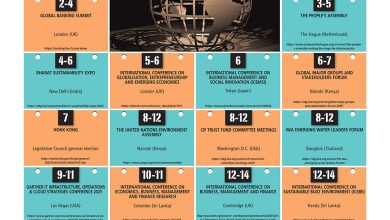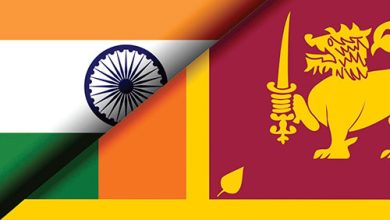KASHMIR ON EDGE
DISCONTENT IN THE INDUS BASIN
Saro Thiruppathy attempts to unravel territorial issues in the valley that could result in a water war as well
If there’s one thing that the once princely state of Jammu and Kashmir (J&K) – which lies at the base of the Himalayas – doesn’t experience, it is peace. The Kashmiris haven’t ruled their kingdom since it was annexed by the Mughal Empire in 1586.
Afghans occupied the land from the mid-18th century until 1819, Sikhs ruled from 1819 to 1946 followed by Dogras who stayed on until 1947 when J&K became both a jewel in the crown, as well as a bone of contention between India and Pakistan.
The Dogra dynasty of Hindu Rajputs ruled over a Muslim nation for a century. Given the option of independence, or acceding to India or Pakistan under the partition plan drawn up by the Indian Independence Act of 1947, Jammu and Kashmir’s Maharaja Hari Singh wanted the state to remain independent.
But an invasion attempted by tribesmen from Pakistan and the Indian troop support extended by India’s first Prime Minister Pandit Jawaharlal Nehru convinced the maharaja to accede to the latter in October 1947. And then began a modern chapter of disquiet in this troubled valley. Nehru’s title ‘Pandit’ was due to his roots in the Kashmiri Pandit community.
When J&K became a state of the Union of India, the government added Article 370 to the constitution in 1949. It guaranteed J&K’s autonomy in the union by affording it special status and until August 2019, Jammu and Kashmir had its own constitution.
But oppression persisted in Kashmir and while it was becoming obvious that its predominantly Muslim populace increasingly preferred Pakistan, Nehru tried to appease them by promising many times to hold a plebiscite to determine the future of the state. But as the option of independence was a distinct possibility, the vote was never held.
On 21 April 1948, the UN Security Council passed Resolution 47 citing concerns over the conflict in Kashmir. The United Nations established a five member commission to visit the region, and help the governments of India and Pakistan restore order in the valley, as well as prepare for the promised plebiscite.
But due to disagreements between the combative neighbours over demilitarisation in the territory, the commission declared it a failure in December 1949.
LINES OF CONTROL India and Pakistan have fought continuously over controlling J&K since their partitioning in 1947. Originally known as the Ceasefire Line, the Simla Agreement of 1972 referred to the de facto border or line of military control that divides the former princely state as the Line of Control (LoC).
Pakistan controls Gilgit-Baltistan in the north and Azad Kashmir in the south while the northernmost point on the LoC is known as NJ9842.
The territory below the LoC belongs to India and on the eastern border lies Ladakh where China owns an area on the extreme right of the map – called Aksai Chin. This territory was acquired during the Indo-China War of 1962 and that border is known as the Line of Actual Control (LAC).
Aside from disputed territory, India’s granting of asylum to the Dalai Lama was also at the heart of the Sino-Indian War. The two countries fought a bitter battle in harsh mountain conditions including combat at altitudes of over 4,000 metres above sea level. It ended when the Chinese declared a ceasefire a month later and withdrew to what it designated as its LAC.

J&K SPECIAL STATUS The abrogation of Articles 370 and 35A was a campaign pledge by the Bharatiya Janata Party (BJP). Bifurcation of the region, which originally comprised J&K and Ladakh, resulted in the former being converted into a union territory with its own legislature and the latter into another union territory under direct rule by the centre.
By rescinding Article 35A, India removed the exclusivity enjoyed by J&K’s permanent residents, which included the right to own immovable property, settle permanently, have access to state sponsored scholarship programmes and hire only residents.
Beijing and Islamabad are extremely displeased with Delhi’s unilateral actions. After China occupied Aksai Chin in 1962, Pakistan ceded a section of Gilgit-Baltistan in the north to China, giving it more access to J&K. And in turn, China tightened its hold in Pakistan occupied Kashmir with a US$ 60 billion China-Pakistan Economic Corridor (CPEC) project that passes through Gilgit-Baltistan.
INDUS WATER SUPPLY In addition to land issues, there’s also the equitable distribution of water that flows down from the Himalayas. In 1960, the World Bank brokered the Indus Water Treaty (IWT), which though nonbinding has been honoured by both India and Pakistan so far.
According to the IWT, water flowing along the eastern rivers of Beas, Ravi and Sutlej belongs to India, while the waters from the western rivers Indus, Chenab and Jhelum are allocated to Pakistan.
Since Pakistan receives more volume, the IWT allows India to use water from the western rivers for limited irrigation use and unlimited power generation etc. but lays down precise regulations on the structure of projects by India.
But after a serious skirmish in J&K in February, India said that it would be utilising the excess water that flows from the eastern rivers rather than letting Pakistan enjoy it. Now Delhi – with legislative control over most of the valley – can generate both droughts and floods in Pakistan if it so wishes, which is a worrisome situation for Islamabad.








This war will never end.